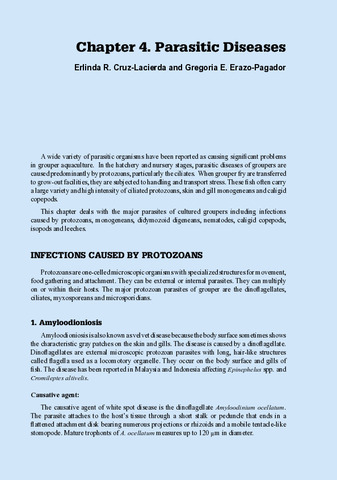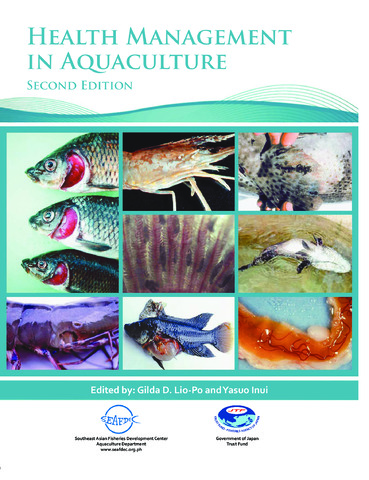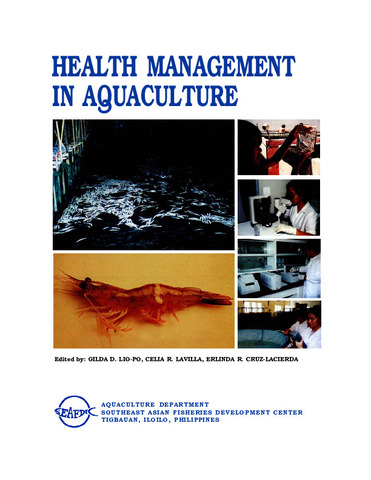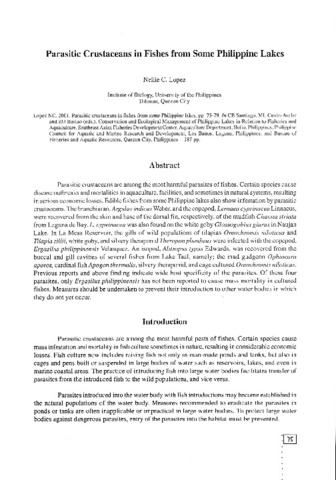Parasitic diseases
- Global styles
- MLA
- Vancouver
- Elsevier - Harvard
- APA
- Help
Share
Abstract
A wide variety of parasitic organisms have been reported as causing significant problems in grouper aquaculture. In the hatchery and nursery stages, parasitic diseases of groupers are caused predominantly by protozoans, particularly the ciliates. When grouper fry are transferred to grow-out facilities, they are subjected to handling and transport stress. These fish often carry a large variety and high intensity of ciliated protozoans, skin and gill monogeneans and caligid copepods.
This chapter deals with the major parasites of cultured groupers including infections caused by protozoans, monogeneans, didymozoid digeneans, nematodes, caligid copepods, isopods and leeches.
Suggested Citation
Cruz-Lacierda, E. R., & Erazo-Pagador, G. E. (2004). Parasitic diseases. In K. Nagasawa & E. R. Cruz-Lacierda (Eds.), Diseases of cultured groupers (pp. 33-57). Tigbauan, Iloilo, Philippines: Aquaculture Department, Southeast Asian Fisheries Development Center.
Type
Book chapterISBN
9718511709Collections
Related items
Showing items related by title, author, creator and subject.
-
Health management in aquaculture
Lio-Po, Gilda D.; Inui, Yasuo (Aquaculture Department, Southeast Asian Fisheries Development Center, 2010-07)A textbook on diseases of cultured warmwater fish and shrimps in the Philippines. Eleven chapters cover essential information on the basic principles of disease causation, major diseases of cultured fish and crustaceans, ... -
Health management in aquaculture
Lio-Po, Gilda D.; Lavilla, Celia R.; Cruz-Lacierda, Erlinda R. (Aquaculture Department, Southeast Asian Fisheries Development Center, 2001)A textbook on diseases of cultured warmwater fish and shrimps in the Philippines. Eleven chapters cover essential information on the basic principles of disease causation, major diseases of cultured fish and crustaceans, ... -
Parasitic crustaceans in fishes from some Philippine Lakes
Lopez, Nellie C. (Aquaculture Department, Southeast Asian Fisheries Development Center; Philippine Council for Aquatic and Marine Research and Development (PCAMRD), Department of Science and Technology; Bureau of Fisheries and Aquatic Resources, 2001)Parasitic crustaceans are among the most harmful parasites of fishes. Certain species cause disease outbreaks and mortalities in aquaculture, facilities, and sometimes in natural systems, resulting in serious economic ...






